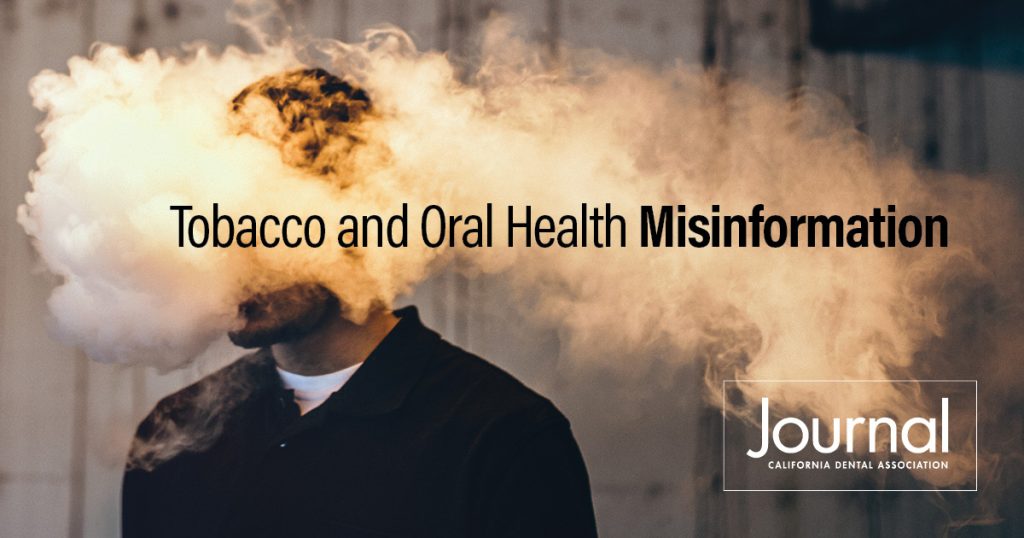Social Media Misinformation Poses Challenge for Dental Professionals
In an era dominated by social media, misinformation surrounding health topics has become a pervasive issue, impacting various fields, including dentistry. A recent study published in the Journal of the California Dental Association sheds light on the prevalence of misleading information related to oral health and tobacco products circulating on Twitter (now X). Researchers analyzed tweets posted between 2020 and 2022, uncovering a significant amount of misinformation, including inaccurate claims about the harmlessness of vaping on oral health. This proliferation of false information presents a challenge for dental professionals, who are tasked with providing patients with evidence-based advice. The study highlights the importance of dentists being vigilant in identifying and countering misinformation with factual information, emphasizing their role as trusted sources of oral health guidance. The authors encourage dental practitioners to enhance their ability to discern credible information from misleading claims, empowering them to effectively communicate with patients and provide accurate guidance.
Dental Professionals’ Role in Combating HPV-Related Cancers
While the HPV vaccine has proven highly effective in reducing the risk of HPV infection and associated oropharyngeal cancers, vaccine hesitancy remains a significant obstacle. This reluctance, fueled in part by online misinformation, poses a barrier to widespread HPV vaccination. A separate article within the CDA Journal collection emphasizes the crucial role of dental professionals in promoting HPV vaccination and educating patients about the link between HPV and oropharyngeal cancers. It provides practical strategies for incorporating HPV prevention interventions into daily dental practice, empowering dentists to engage in meaningful conversations with patients and address their concerns about the vaccine. Given the increasing incidence of HPV-related oropharyngeal cancers, the authors stress the importance of open communication between dental professionals and patients, enabling informed decision-making about HPV vaccination. The article equips dental practitioners with the knowledge and tools to effectively advocate for HPV vaccination as a vital preventive measure.
Combating the Spread of Misinformation: A Call to Action for Dental Professionals
The pervasive nature of online misinformation necessitates a proactive approach from dental professionals. The study on misinformation underscores the need for dentists to actively engage in online platforms, disseminating accurate information and countering misleading claims. By establishing a strong online presence, dental professionals can effectively combat the spread of misinformation and ensure that patients have access to reliable oral health information. This proactive approach is essential for fostering trust and empowering patients to make informed decisions about their oral health. The challenge lies in navigating the complex landscape of social media and effectively communicating evidence-based information in a concise and engaging manner.
Exploring the Impact of Stephen Curry on Mouthguard Adoption
The influence of prominent figures like NBA star Stephen Curry on health-related behaviors is explored in an editorial within the CDA Journal collection. The editorial examines the potential impact of Curry’s consistent mouthguard use on the normalization and popularization of this protective gear, particularly among young basketball players. While Curry’s influence may be unintentional, the editorial suggests that his visibility as a professional athlete wearing a mouthguard could contribute to increased mouthguard adoption, promoting oral health and injury prevention in sports. This observation highlights the potential of role models in shaping health behaviors and underscores the importance of leveraging their influence for positive public health outcomes. The editorial also provides a historical overview of mouthguards in sports, discussing their evolution and emphasizing their crucial role in preventing orofacial injuries.
Dental Student Research Sheds Light on Salivary Diagnostics
The CDA Journal collection also features research conducted by Loma Linda University School of Dentistry students and faculty. Their pilot study explores the awareness and perception of salivary diagnostics among dental students and faculty. Salivary diagnostics offer a non-invasive approach to detecting various oral health conditions and diseases. The study’s findings provide valuable insights into the current understanding and acceptance of salivary diagnostics within the dental community. This research contributes to the ongoing conversation about the potential of salivary diagnostics to enhance oral health care and improve diagnostic accuracy. The inclusion of student research in the journal underscores the importance of fostering research within dental education and promoting the next generation of dental researchers.
Comprehensive Coverage of Oral Health Topics in the CDA Journal Collection
The CDA Journal collection offers a wide range of articles covering various aspects of oral health. From addressing misinformation on social media to exploring the role of dental professionals in HPV prevention, the collection provides valuable resources for dental practitioners and researchers alike. The inclusion of student research and editorials further enriches the journal’s content, offering diverse perspectives and fostering a dynamic exchange of ideas within the dental community. The journal serves as a platform for disseminating cutting-edge research, promoting best practices, and addressing emerging challenges in the field of oral health. The diverse range of topics covered ensures that the journal remains a relevant and engaging resource for dental professionals seeking to stay informed about the latest advancements and trends in oral health care.


